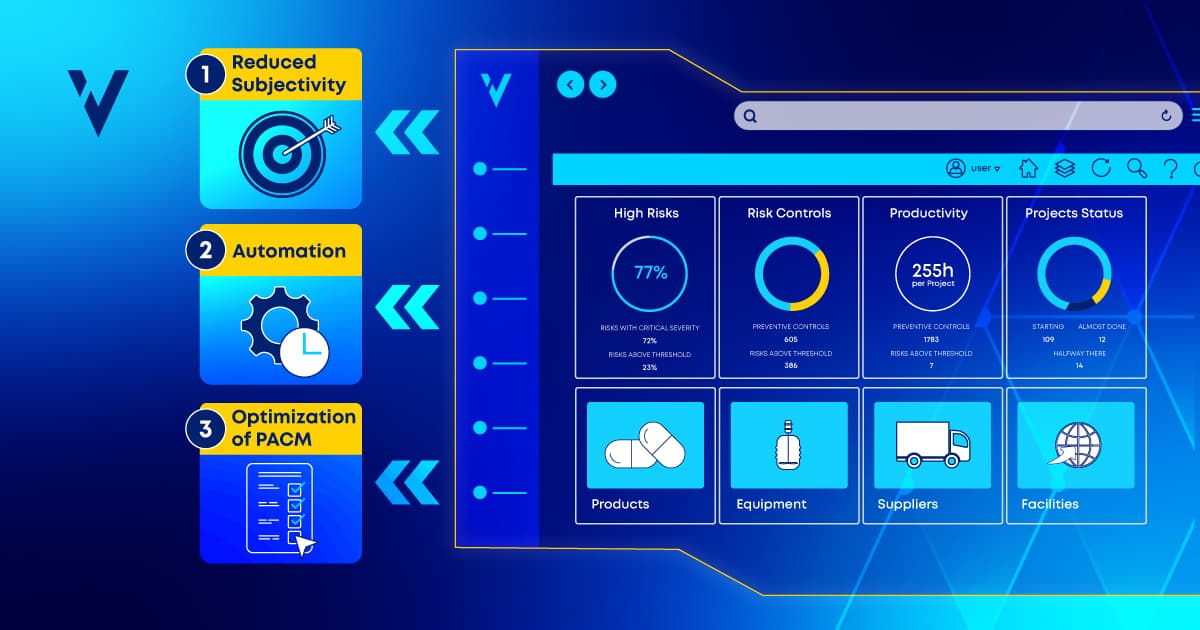
Published on March 22, 2023
Reading time: -- minutes
Last updated on November 4, 2024



Making Post-Approval Changes can be a challenge. You have different timelines, different submission requirements and trouble optimizing your processes. Because of that, this makes the knowledge of creating a post-approval change management (PACM) protocol even more important.
And that’s what this blog post is all about! In it, we’ll talk about the ICH Q12 and how it supports the creation of a PACMP. And then we’ll go through the steps of creating one!
Some of the guidelines had already introduced Quality by Design (QbD) concepts to product development and manufacturing. We’re talking, of course, of the ICH Q8, Q9, Q10 and Q11!
However, they weren’t all too clear on the topic of Product Lifecycle Management. And because of that, in 2017, the ICH published a new guideline with the impressive name of “Technical and Regulatory Considerations for Pharmaceutical Product Lifecycle Management“: the ICH Q12!
So, this guideline has a different focus from the others. Starting with biologics, going through API’s or even drug-device combinations, it addresses Established Conditions (ECs), Product Lifecycle Management (PLM), Pharmaceutical Quality System (PQS) and the topic of this blog: Post-Approval Change Management Protocol!
So, let’s focus on the world of post-approval changes for products already in the market.
ICH Q12 contains 5 very useful instruments. The main gain? They allow for agile lifecycle management. But they also have a positive impact in the industry and regulatory oversight practices such as:
Therefore, part of the guideline is about tools that allow continued opportunities for streamlined change implementation. The tool we want to focus on is the Post-Approval Change Management Protocol (PACMP).
So, what is the point of PACMP? Well, PACMP is a tool that gives you a framework to implement changes in your already approved manufacturing process.
It describes:
Having an optimized and streamlined PACM Protocol has a lot of benefits. Benefits both for your company and for your product manufacturing. Benefits such as:
However, submitting a PACM Protocol can be as tough as it sounds. Let’s have a look on what you need to consider for change implementation.
All right, time for the challenge of applying a Post-Approval Change Management Protocol!
You need to focus on two steps to guarantee that things will work themselves out.
Before executing this protocol, the regulatory authority will have to review it and approve it. If they do approve them, congratulations! You’re ready to take on the next step.
So, you have defined your criteria, and they have been approved. You go ahead and perform your tests. But like with any tests, there are two possible outcomes:
Please keep in mind that, if you make significant changes that were not anticipated in the step 1, you can’t implement them as part of step 2. Why? Because no change outlined in a PACMP should introduce any additional risk to patient safety, product quality or efficiency.
If you came this far, it should be clear by now the context of the ICH Q12 guideline, how to submit a post-approval change and even the benefits of having an optimized protocol can bring to your products manufacturing.
But where can you apply a PACMP? Plenty of places! A PACMP can be applied in:
We suggest you have a look at ICH Q12 guidelines to learn in better detail how can you implement PACMPs at each of the points that we presented.
Having a Post Approval Change Protocol implies a careful risk analysis and a full understanding of the different risk assessments. That will assure that safety, quality, and efficiency are never compromised.
Our team is highly specialized in optimizing Quality Risk Management Processes. We make use of decades of experience and our proprietary Risk Management software to ensure that your risk activities are align with FDA and ICH guidelines.
If you want to know more about it, please contact us.

Learn how to simplify regulatory approval for post-approval changes and discover the benefits of implementing a PACM protocol and using a QRM platform.
By Rui Almeida
Read
In this post, we’ll look at 3 benefits of integrating process data with risk management and how it increases organizational efficiency and competitiveness.
By Pedro Ferreira
Read
Explore the key aspects of ICH Q12 and a 5-step structured framework for effective post-approval change management (PACM) agility.
By Rui Almeida
Read